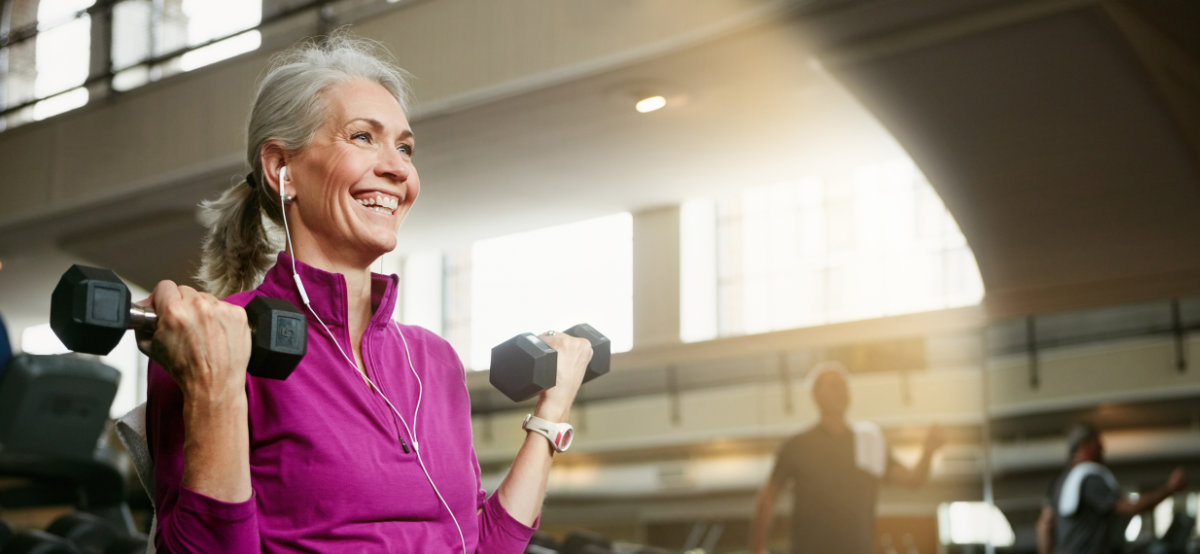If you’re to believe what you see on social media, only the young and super fit lift weights. This, unfortunately, may deter older people from strength training, which isn’t great news – particularly in light of new research. It found that weight lifting for seniors is one of the most effective ways to keep healthy as you age.
The study – published in the British Journal of General Practice by scientists from University College Dublin – found: “A combination of muscle strength training and protein supplementation was the most effective intervention to delay or reverse frailty.”
According to the NHS, frailty is related to the ageing process and is when our bodies decline – for example, when we become more vulnerable to small health problems like minor infections. The NHS says people living with severe frailty have over a four times greater annual risk for future hospitalisation, care home admission or death. Age UK says that around 10% of over 65s are frail, and it increases to 65% for those over 90.
Weight lifting for seniors – along with protein supplements – can delay or reverse many of the effects that often come with ageing. If you’re a new to muscle strength training and an older person looking to get started in the gym, Wise Living has rounded up the dos and dont’s of what you should be doing in the gym – according to strength and conditioning coach at Pure Sports Medicine, Cameron Lane.
Weight lifting for seniors guide
1. Prepare properly before lifting weights
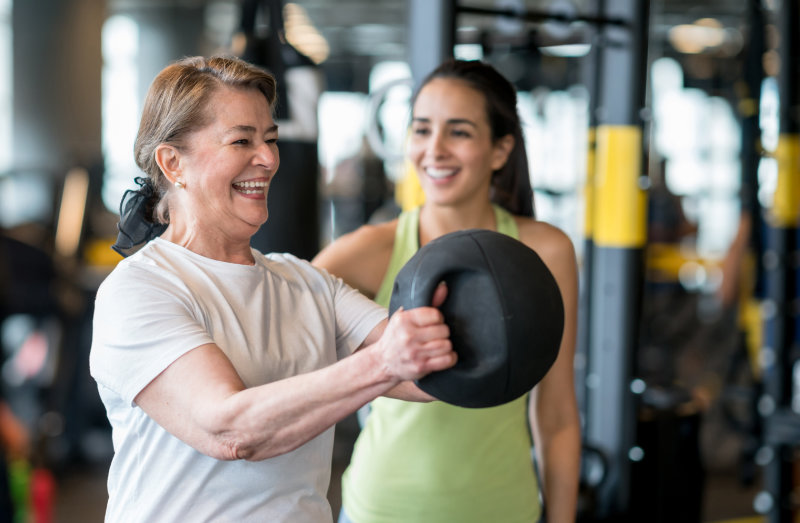
“Strength training should be prescribed and supervised by a suitable qualified and experienced coach, trainer or instructor,” Lane explains.
Making sure you know what you’re doing and your body is ready to start strength training is key before you start lifting weights. Lane also recommends those with prior health issues, like high blood pressure, undergo a medical screening beforehand. The more prepared you are for weightlifting, the less likely you are to injure yourself. Take time to work out hoe often you should lift weights, and seek advice from a personal trainer or staff at your local gym before starting.
Looking to find a personal trainer? They can help answer questions such as how often seniors should lift weights, and the best weight lifting routines. Read the Wise Living guide to finding and using a personal trainer.
2. Avoid high intensity jumping and high impact exercises
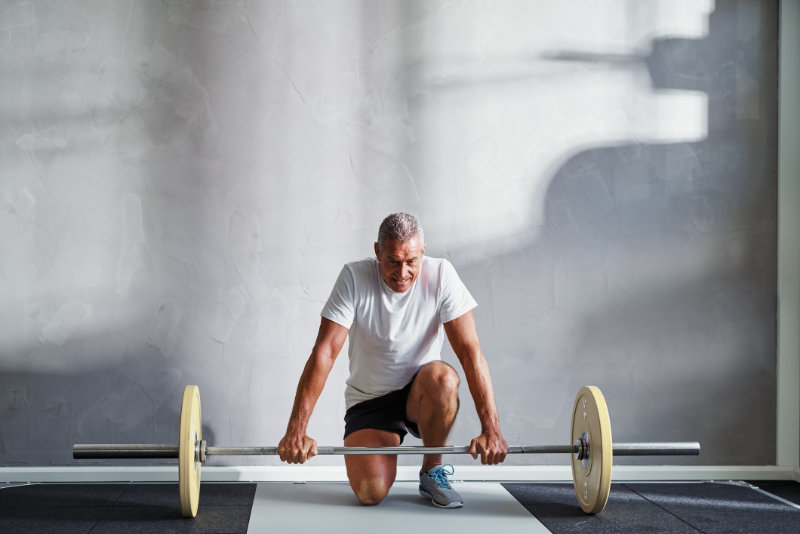
Lane warns against “repeated high intensity jumping and landing exercises”. The older you are, the more careful you have to be with your body, so you have to evaluate with each exercise whether it is pushing you too hard.
“An appropriate level of high intensity jumping and landing has been shown to have a positive influence on bone related health issues such as osteoporosis, however, too much can possibly lead to injury,” Lane says.
3. Weight lifting for seniors means starting light
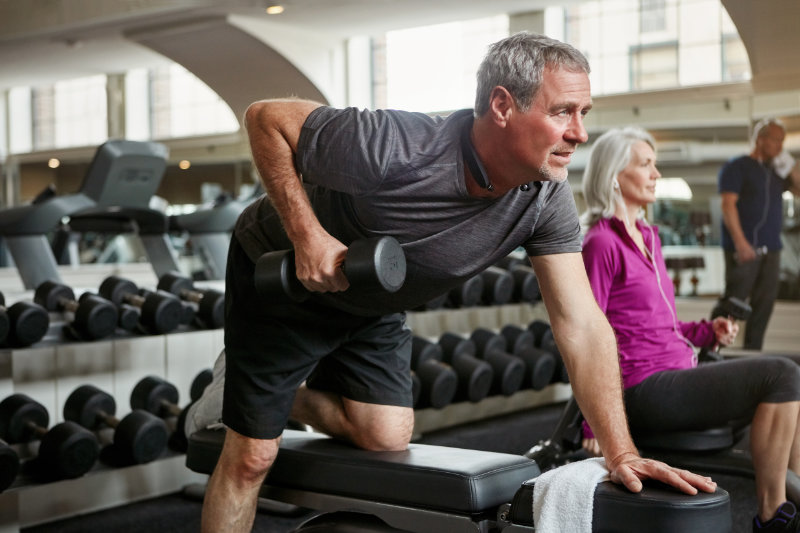
This really applies to anyone lifting weights first the first time – don’t go too heavy and hard immediately, because you could injure yourself, and this risk is greater for the elderly.
“Training should have an appropriate starting level,” says Lane. “Exercises should be selected based on a systematic progression.” This could mean upgrading from stable to unstable movements, or from static to dynamic exercises. Start small, then you can build your way up as you become more comfortable and confident.
4. Gradually increase weights and reps
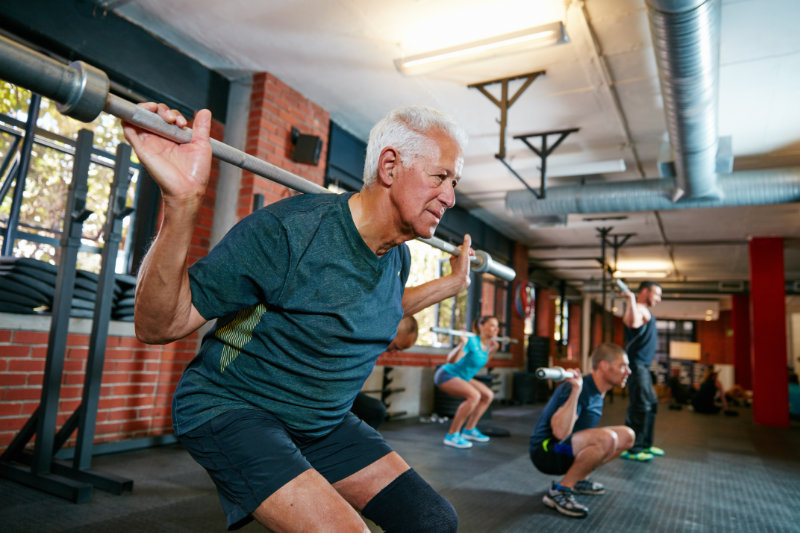
It’s important not to get into a lifting rut, because if your training plateaus, you’re unlikely to see much of a benefit to your body. Whether this is upgrading the movements as explained above or increasing the weight you’re lifting, you should be constantly making things harder for yourself.
“To continue seeing improvements from exercise, the sessions and exercises must gradually become more challenging once the client has achieved an appropriate level of competency,” Lane says.
5. Balance training is important
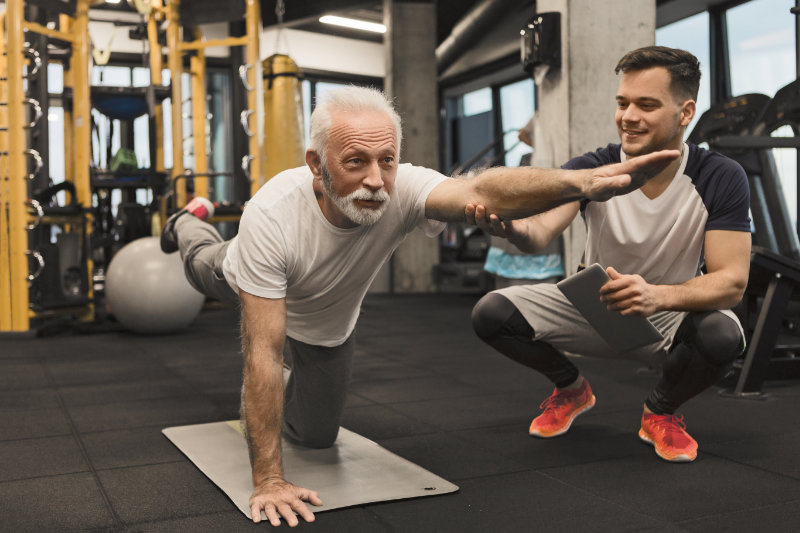
Weight lifting for seniors should just be limited to pumping iron, and Lane recommends supplementing strength training with balance-based exercises. “There is large evidence that shows balance training reduces the risk of falls in the elderly population,” he explains.
This could be as simple as balancing on one leg, or even standing on the bosu (that flat rubber ball you might recognise from the gym). Balance training is also suitable for the elderly because it’s not high impact or intensity – all you have to do is move slowly and methodically, focusing on your core.
6. Lift free weights properly
If you have a gym membership but stick to the cardio equipment, you’re missing out on a whole host of strength and fitness benefits from using free weights as an older person.
Weight lifting for seniors can help burn more calories, tone you up and make you stronger (but not necessarily bulkier unless that’s the effect you’re going for). The problem is, many older people feel intimidated by the entire weights section and avoid it completely.
So we caught up with London Fitness Guy, aka James Stirling, at Boutique Gym ONE LDN, who showed us five exercises for complete novices to try.
Looking to start your weight lifting routine? Read the Wise Living guide to finding the best gym near you.























































